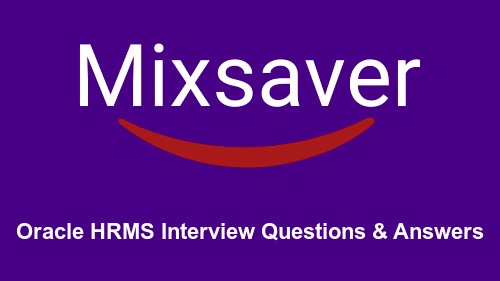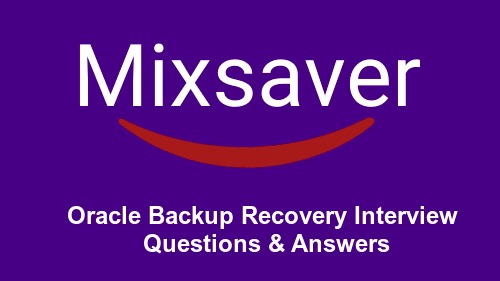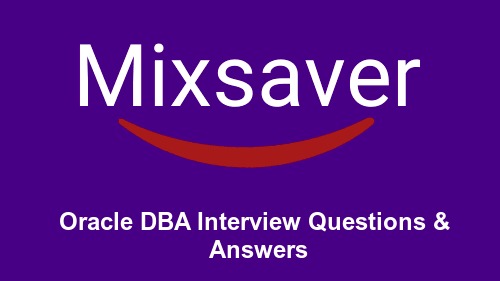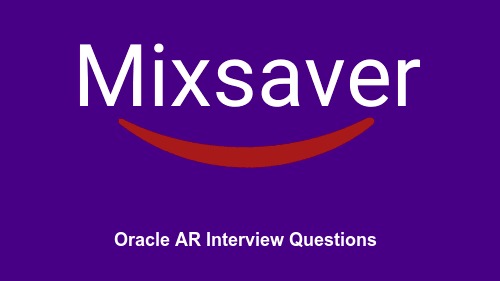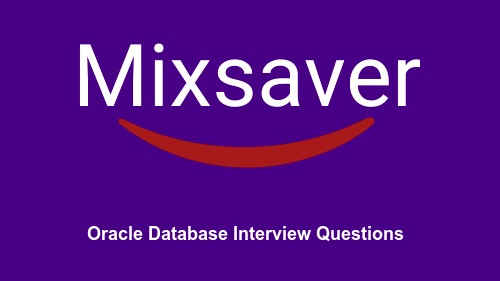1. What are basic setups of oracle HRMS?
In oracle HRMS there are so many modules like Core HR, Payroll, Self Service HR, Oracle learning management, iRecruitment, Time and Labour, Compensation Work bench, Oracle Advanced Benefits, Performance Management System etc., Core HR and System Administrator are the Heart of Oracle HRMS.
All basic set ups will do in Core HR with the help of System Administrator.
In system administrator we will create all the Users and Responsibilities, Flex fields, Profile values etc., In core HR we will create Organizations, Locations, Jobs, Positions, Grades, Organization Hierarchy, position Hierarchy, We will create all the employees also. These are the Basic setups in HRMS.
2. What is the difference between a Job and a Position?
Job is general one, whereas Position is specific term to its role and responsibilities.
JOB: MANAGER (generic term), SOFTWARE DEVELOPER
POSITION: Finance Manager, HR Manager, Junior SOFTWARE ENGINEER, (this is position which is specific to the role to be played)
3. What are the difference between extra information type (EIT. and special information type (SIT)?
EIT and SIT Both are provided by Oracle to Capture Extra Information. Basic differences would be EIT is similar like a DFF and also defined using DFF Definition Screen. SIT is KFF and defined using Personal Analysis KFF Definition screen.
SIT generally used at Person Level, EIT can be defined at PERSON, ASSIGNMENT, CONTACT, ELEMENT, LOCATION and JOB LEVEL.
There are 2 columns start_date_active and end_date_active in SIT while no such columns are there in EIT.
4. Tell me the name of important Key Flex-Fields (KFFs) in Oracle HRMS?
Job KFF,
Grade KFF,
People Group KFF,
Position KFF,
Cost Allocation KFF,
Competence KFF.
5. List of some Important Tables in HRMS
Per_all_people_F,
per_person_types,
per_person_type_usages,
per_addresses,
Per_all_assignments_f,
per_jobs,
per_job_Definitions,
per_grades,
per_grade_definitions,
hr_all_positions,
hr_all_position_definitions,
hr_all_locations,
pay_all_payrolls_F,
pay_element_entries_F,
pay_elements_links_F.
6. What is the difference between both SECURED VIEWS and NON SECURED VIEWS?
1.Secured views display information only for the current period
2. Unsecured views is used to get the information from the entire rows
7. Define APIs and use in Oracle HRMS?
API’s are used in HR to insert the data into the Base tables. As it’s very secured system, the user does not have the facility to copy the data directly into the Base tables. When we write the inbound interfaces / use WebAdI, the systems will use the APIs to store the data into system. The API are published by oracle with number of parameters. The different types of parameters are IN / INOUT / OUT of these parameters few are mandatory, without which the process won’t complete. Generally when we use API we give data FOR: Object Version Number, Effective Date and P_Validate
HR_EMOYEE_api example: hr_employee_api.create_employee
hr_organization_api Example: hr_organization_api.create_organization
hr_assignment_api
8. What are processing types of element?
Elements are nothing but the components of the salary.
For Example: Basic Salary, House Allowance, Transport Earning, Bonus, Loan Recovery etc.
There are 2 types of Processing
1. Recurring: if an entry of this element applies in every period until the entry is ended
2. Non Recurring: if an entry applies in one pay period only.
9. What are termination roles of an element?
Termination Rules of an Element:
a).Actual Termination: For a nonrecurring element, select Actual Termination if you want the entries to close down at the end of the pay period in which the employee leaves.
b).Final close: if you want the entries to stay open beyond the employee’s leaving date so that you can continue to pay the employee.
c).The Last Standard Process date defaults to the last day of the pay period in which the employee is terminated, but you can set it to a later period when you terminate an employee.
10. What is a security profile?
Security profile provides more security within BG. It helps in determining what users have access to what data. The levels where you can have security profile are: Organization Position Payroll Supervisor User specific: you can restrict / give permission to any user you can also have Custom security
11. What is a security profile in HRMS?
Need to have: consolidation set payroll employees should be attached to payroll balance pay methods required elements and run the process ? payroll run ? do correct in case there is change.
12. What is the difference between rehire and reverse-termination?
This means, you are hiring an ex-employee again after interviewing him for a certain position. So the person will have a new service record but the personal details might remain the same? When an employee is terminated as per the process or by mistake and then there is a requirement to call back the employee immediately after termination, is known as reverse termination .It means you reverse the process and retain the employee ?When you reverse terminate the process the termination details are cleared and his employment details continues with the same assignments and with the same service period.
13. How many key flex fields in HRMS?
Let me brief about HRMS first: HRMS includes Payroll, but we have Payroll as a separate application when query KFFs. There are 10 KFFs in HRMS.1. Job KFF2. Position KFF3. Grade KFF4. Competence KFF (The above four KFFs are part Human Resources application)
14. How do you define B.G?
By default “Setup Business Group” available in the system. This BG info visible to all the employees, to represent a single Unit.Hence in order to make partition on the Employee data (create a separate Group. we need to create new BG. On the whole defining)
15. What is Retro Pay in Oracle Payroll? How many types of Retro Pays are available?
Retro Pay is a payment made for an event of past. Retro Pay stands for some old Payment due for the employee. This is used for Back Dated Salary Increments.
There are four ways:
1. Retro Pay by Run
2.Retro Pay by Aggregate
3.Retro Pay by Element
4.Enhanced
16. How many types of payrolls are there?
Two types:
1. Regular pay
2. Quick pay
17. How do you declare bonus of an employee in Oracle HRMS Payroll?
You can define one element (earnings. and use it to pay Bonus. Declaration is based on the functional inputs, suppose company wants to pay Bonus along with January Salary in Every Year, you can write the formulas accordingly) Cheers.
18. What are the tools used with Oracle HRMS?
Oracle Reports, Discoverer, Standard seeded reports, View/List option of the menu – output could be exported in word/excel, WebADI etc.
19. What are the advantages of Oracle HRMS over PeopleSoft HRMS?
Oracle HRMS is more secured than People Soft HRMS.
20. How people management is achieved using Oracle HRMS?
How is gross pay elements defined in Oracle HRMS?
21. What are the reports available with Oracle HRMS?
Absences Report Assignment Status Report Current and Projected Progression Point Values Report Element Link Details Report Employee Increment Results Report Employee Movements Report Employee Summary Report Full Personal Details Report Set Full Applicant Details.
22. How Oracle HRMS helps in Budgeting and Costing?
You can set up budgets for non-monetary measures such as headcount or full-time equivalent. When you enter employee assignments to define the work an employee does for your enterprise, you can specify the value of the assignment towards these budgets.
23. What are the advantages achieved by an organization by using Oracle HRMS?
Remember the pyramid kind structure: People, WS and Compensation benefits with Assignments being the basis. This model is both flexible and adaptable. It is flexible, so that you can reflect the needs of different companies
24. What is advanced benefits module in Oracle HRMS?
Oracle Advanced Benefits (OAB. takes care of the management of Benefits Administration part.? it has very advanced features like Life Event Triggering / Processing, ? FSA administration, Reimbursement processing, Communications relating to Benefits etc.
25. What are the modules available in Oracle HRMS?
Core HRPayroll (Includes Standard Benefits) Adavnced Benefits (OAB. Talent Management (Performance Management) Oracle Time and Labor (OTL) Oracle Learning Management (OLM) iRecruitmentSelf Services HR (SSHR).
26. What are the vital features of Oracle HRMS?
Vital features are: People, Assignment, Work Structure, Compensation and Benefits.
27. How is new reports created in Oracle HRMS?
Discoverer, BI Reports, Copy existing report and register with different name.
28. What are the steps involved in implementation of Oracle HRMS?
Following are the steps to implement Oracle HRMS, — Define Key Flex fields– Define Descriptive Flex fields– Define Business Group– Set required Profile Options– Define Location– Define Organization– Define Grades– Define Jobs– Define Positions
29. What are the key flex fields present in Oracle HRMS?
1. Job2. Position 3. Grade 4. People Group 5. Cost Allocation6. Competence7. Bank Details 8. Soft Coded 9. Personal Analysis crieteria10. Collective Agreement.
30. What is date tracking, how it is used in HRMS ?
date tracking is a feature in Oracle HRMS esp with all tables whose name send with _F eg:per_all_people_f .Now what happens here is we cannot purge a record .
31. What are the key tables used in HRMS?
There are many tables used in HRMS. I have listed some tables. PER_ALL_PEOPLE_FPER_ALL_ASSIGNMENTS
_FHR_ALL_ORGANIZATIONS_UNITSPER
_LOCATIONS_AL
32. What is costing?
Costing:
Recording the costs of an assignment for accounting or reporting purposes, Using Oracle Payroll, you can calculate and transfer costing information to your general ledger and into systems for project management or labor distribution.
33. What are 2 modes of date track in Oracle APPS?
There are two Date Track modes are as follow:
1. Update
2. Correction
34. Can we delete an employee forever? How?
Use ?Delete personal record? form from front end. But employee should not be a application user (end date the username before delete) and should not be having payroll run data.
35. Can a job have multiple positions?
Job is generic. Yes a job can have multiple positions.
36. Can you call PL/SQL Package functions from within a Fast Formula?
Yes you can
–>how do we do this?
There is a Define Function screen in HR. In this screen you will register the PL/SQL as “External Function”.
37. Can we want to pass a parameter PAYROLL_ID to this external PL/SQL Function, how do we do it?
The “Define Function” screen has a button named “Context Usage”. This button opens up a window in which you can register the parameters.
38. How do you debug a Fast Formula?
You can create a message variable in Fast Formula.
This message variable must also be registered as a Formula Result (In “Formula Result Rule” window).
39. What are the various levels where you can Set up Payroll Costing Accounts? Which levels take the highest precedence?
Element Entry => Highest
Assignment => Second Highest
Organization => Third Highest
Element Link => Fourth Highest
Payroll => Fifth Highest
40. Technically speaking, how do you know from tables that an Employee has been terminated?
a. The Person_Type_ID in PER_PERSON_TYPE_USAGES_F will correspond to System Person Type EX_EMP
b. A record gets created in table PER_PERIODS_OF_SERVICE with Actual_Termination_date being not null
41. How can you make Employee Number generation Automated based on business rule etc?
Use Fast Formula.
42. What is the difference between per_people_f and per_all_people_f?
PER_PEOPLE_F is a secured view on top of PER_ALL_PEOPLE_F. The secure view uses an API hr_security.show_person. This API internally checks for an entry in table PER_PERSON_LIST for the logged in person’s security profile. A concurrent program named “Security List Maintenance program” will insert records in PER_PERSON_LIST.
43. If you do personalization at both FUNCTION level and Responsibility level, which personalization has higher precedence?
Responsibility level. Responsibility level will override FUNCTION level personalization’s.
44. Say you have done a lot of Personalization’s to Self Service Screens. But all these Personalization’s were done in DEVELOPMENT environment. How will you migrate these personalization’s to PRODUCTION environment?
Before 11.5.7…Use AKLOAD
This is a java program given by Oracle. This is the only way you can script it.
In DEV you will do AKLOAD DOWNLOAD ( & other parameters)
In PRD you will do AKLOAD UPLOAD ( & other parameters)
On or after 11.5.10 Use responsibility “Functional Administrator”, then click
on Personalization Tab, and then click on Import/Export.
Next select the documents to be exported.
Go to the UNIX box and tar the personalization’s into a .tar file.
On the Production environment unzip this tar file in location as entered in profile “FND: Personalization Document Root Path”.
Setting up of this profile is mandatory or else Oracle Framework wouldn’t know where to search for the files to be imported.
45. How to restrict iRecruitment external visitors to access only responsibilities on the external server?
Set the Server Trust Level for the server to External, Set the Trust Level of the iRecruitment external responsibilities to External too.
46. Is SSHR a dependency for iRecruitment?
iRecruitment has no dependence on SSHR
47. Does iRecruitment support “Candidate Qualifying Questionnaires” where the candidate must answer vacancy-specific questions correctly prior to submitting an application?
iRecruitment currently does not support this function, For now this can be achieved by having a set of simple questions using flexfield to get those responses and a user hook to validate them as part of the apply process.
48. Do we track vacancy history?
iRecruitment does not track changes to the vacancy. If changes to a field are to be traced use the Audit capability in APPs.
49. Ensuring that Costing Information can be provided
On completion of a payroll run you may need to distribute the associated costs across particular cost centres. Oracle supports this using the Cost Analysis module.
50. Can you run payroll processes and reports multi-lingually?
Payroll processes and reports are always submitted and always run in the local language only. This means that US and UK payroll reports can only be run in English.
